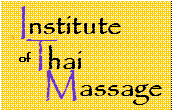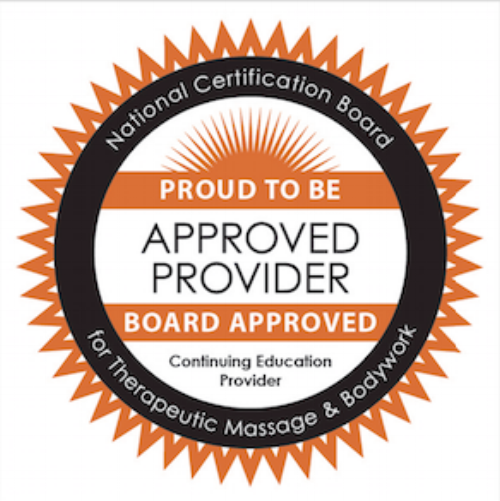““Thai Massage is like ten thousand waves washing over your body.””
What is Nuad Bo-Rarn ?
Thai massage is beneficial for both giver and receiver, providing a relaxing yoga-like experience and utilizing leverage over muscular work. This makes it easy on the hands, and therapeutic for both parties. It is warm and interactive, normally done on a floor mat but very applicable to table work. The stretching, palming, and thumb pressing characteristic of Thai massage leaves clients feeling amazing for a long time afterward.
The Thai work Nuad is usually translated into English as "massage." Bo-rarn is translated as "ancient". So, Nuad Bo-Rarn means "ancient massage", or "ancient healing way". However, Thai massage is very different from the type of tissue manipulation which is usually associated with massage in the context of western practice.
Nuad Bo-Rarn is a key component of Traditional Thai Medicine, a holistic approach to healing the the body, heart-mind, and spirit. Thai medicine strives to treat the underlying cause of any illness by addressing imbalances. Each aspect affects others, so the most effective treatment addresses the whole person. Traditional Thai medicine encompasses the use of herbs, diet, nutrition, spiritual practices, and nuad bo-rarn.
How is it done?
As in any country, regional variations occur all over Thailand. There is not only one way to correctly do nuad bo-rarn, but rather many ways, depending on the background and perspective of one's teacher, even in Thailand. Nuad bo-rarn has been influenced over the course of Thai history by the culture and beliefs of indigenous peoples, shamanic spiritual practices, yoga influences from India, and medical practices of China and the west (particularly Europe and the US). There are, however, common practices to the work.
Traditionally, Thai massage is performed on a mat on the floor rather than a raised table. This allows for many movements and procedures that are not practical or effective in table work. Being on the floor allows for the most effective use of the practitioner's body weight rather than muscular force for the transmission of pressure, force, or energy, which creates a highly therapeutic effect. The client remains fully clothed except for the feet. Clothing should be light and allow for flexible movement.
The work itself consists primarily of pressure on energy pathways and points, and a large variety of passive stretching movements. Pressure is exerted with the palms of the hand, the thumbs and the feet; at some points the elbows or knees may be used. The pressure and stretching movements are combined in a comprehensive strategy that may be performed in as little time as an hour, or may be extended to two or three hours for a full program. Two hours is frequently considered an ideal length of time for a Thai massage, although in the west, 90 minutes is also common.
The stretching movements in nuad bo-rarn affect the entire body by increasing flexibility, releasing both deep and superficial tension, and helping the body's natural life force to flow more freely. The effect of these stretching and compression movements, in which the client plays only a passive role, is similar to yoga. This is sometimes referred to as passive yoga. The result is an opening of the body which leaves one feeling both relaxed and energized at the same time.
Energy Medicine?
Nuad bo-rarn is not based on a western system of anatomy, so references to body structure were based on external observation. This is not to say that this implies an understanding of the body which is superficial: quite the contrary, it is profound, based on generations of experience. Although this may initially be frustrating to the western student, learning to "think Thai" helps one to move with greater freedom and intuitive sense.
In the Thai view, what one might call 'life force' or ‘energy’ in the body (sometimes described as wind or lom) travels along pathways knows as Sen. These sen channels appear roughly similar to both traditional Chinese medicine and Indian Ayurvedic medicine, as well as western biomedicine’s understanding of connective tissue and fascia. Ayurvedic, and Thai medicine, traditionally recognize 72,000 sen in theory. In practice, ten sen (known as the sip sen) serve as the foundation of nuad bo-rarn.
Historical Development
The true origins of traditional Thai massage are somewhat buried in the past. It is often attributed to being over 2500 years old, starting at the time of the Buddha in India. Tradition tells us that it was given to the world by a physician in India who was a contemporary of the Buddha. His name is Shivago Komarpaj (or Jivaka Buccha Komar), and throughout southeast Asia he is considered to be the father of medicine. He is lovingly and respectfully referred to as the "Father Doctor". Ancient texts, written in the Pali language and mentioning Shivago Komarpaj, were considered sacred and were kept with other Buddhist texts. It has been thought that certain monks (or reusis) were the practitioners of this medicine, and the temples were its home.
Unfortunately, Thailand was over-run by the Burmese in 1776, and much of the capital of Ayutthia was destroyed. The ancient texts dealing with nuad bo-rarn are considered largely destroyed and lost. In 1832 King Rama III had the best of the surviving texts collected and inscribed in stone. These stone plaques were set into the walls of Phra Chetaphon Temple in Bangkok (more commonly known as Wat Po) and can still be seen today. Many questions surrounding these inscriptions abound, but the teaching had probably primarily existed as an oral tradition, and it is as an oral tradition that it is often still taught today.
Thailand experienced a variety of cultural influences over time, and these naturally influenced the indigenous medical practices to various degrees throughout the country. We can trace some historical influences to the original T’ai people, Thai shamanistic and animistic practices and a general belief in ‘magic’, Buddhist medicine, Ayurveda, Tantric and Hatha yoga, Traditional Chinese medicine, and more recently, western biomedical theories and practices.
The influence of western medicine has been growing in Thailand, along with a decline in the practice of traditional medicine, including Thai massage. In an effort to help retain their medicinal heritage, and in recognition of its popularity, in recent years the Thai government has become more supportive of the practice and teaching of nuad bo-rarn, and now regulates the profession. Thai massage is in fact quite an attraction throughout the country, and is now offered in many spas and tourist resorts.
Buddhist Influence
With its origins deep within the traditions of Buddhist medicine and culture, it is not surprising that nuad bo-rarn shows influences from Buddhist medical traditions as well as implications of a spiritual nature. While different teachings vary in their inclusion of these practices, one piece that remains for many is the practice of Wai Khru, a term meaning "to pay respect to". Wai Khru is a ceremony of observance that is practiced at the beginning and end of each day's work. It consists of a series of recitations which end with a chant to "the Father Doctor," Shivago Komarpaj. Most Thai massage therapists and students learning the work are taught to honor the Thai people and this ancient lineage of teachers by recitation of "Om Namo" at the start of each class, and often at the beginning of each session. For a popular written translation, go here. Or, listen below or download at no cost, a beautiful (and slightly non-traditional) version of the Om Namo offered to you by the talented and loving Molly Faye Gawler.




